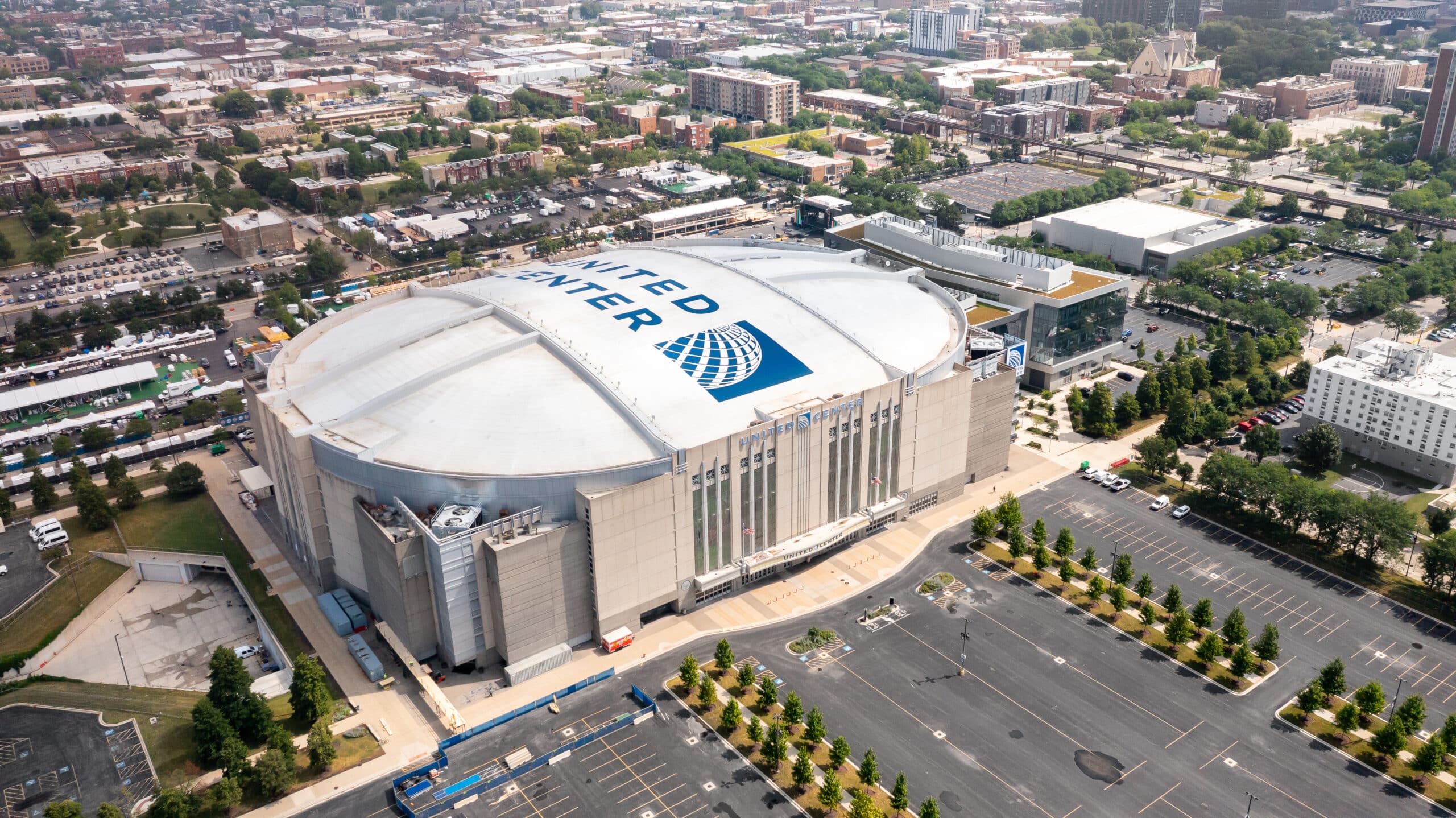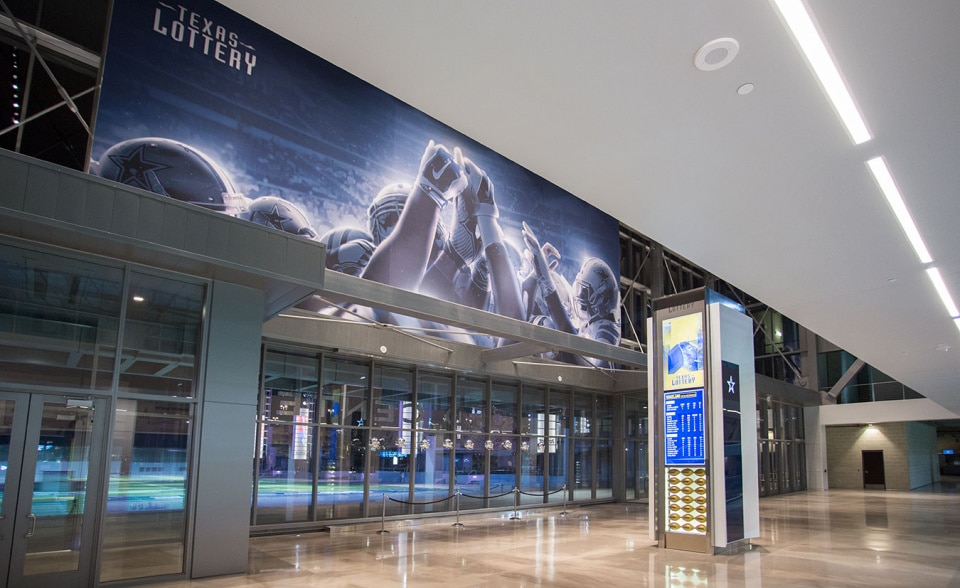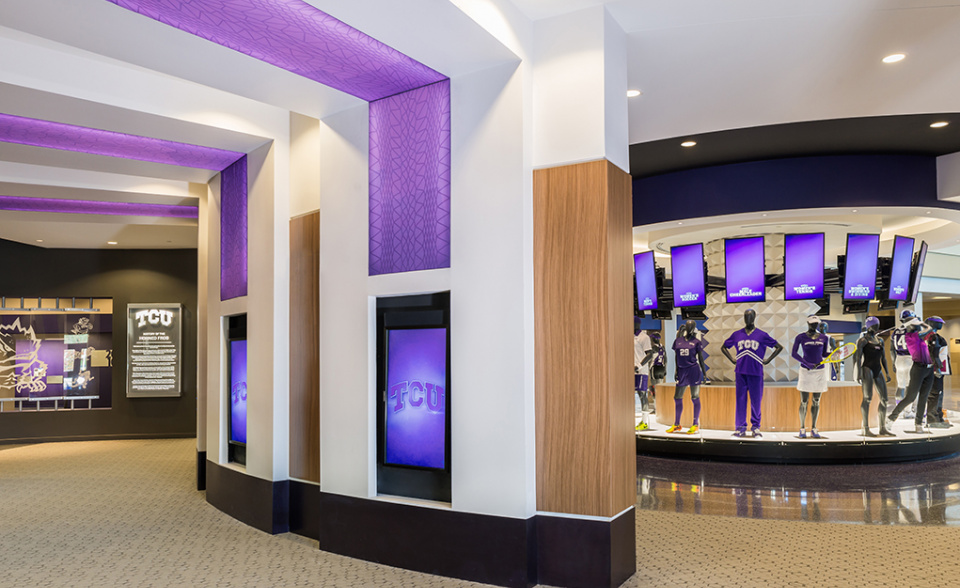Digital Experiences
Thought Leadership
Beyond the Jumbotron: How Technology is Reshaping Sports Arena Design

For decades, the evolution of the sports arena followed a predictable pattern;
- Install bigger screens
- Install louder sound systems
- Install more seats
Technology was treated as an add-on. Something you bolted onto the bones of traditional arena architecture.
That relationship has fundamentally reversed.
Today, technology isn’t just changing how arenas and stadiums look; it’s changing how they’re conceived from the ground up.
Has technology really transformed sports venue design? The right question to be considering is whether we’re thinking big enough about what that transformation means. Let’s deep dive.

Venue Design: The Jumbotron Trap
When you think about technology in sports venues, you picture the massive center-hung videoboard… the modern descendant of the first Jumbotron installed at Dodger Stadium in 1980.
These screens have grown larger, sharper, and more sophisticated, becoming the gravitational center of the in-arena experience.
For me, focusing solely on the jumbotron represents a failure of imagination. The real revolution isn’t happening in the rafters. It’s happening everywhere else.
Rethinking The Sports Venue: Technology as Infrastructure, Not Decoration
At a recent industry conference I attended, the president of Crypto.com Arena in Los Angeles, Lee Ziedman, articulated something I needed to hear: his goal was to keep fans off their phones by creating experiential LED environments throughout the venue that rivaled anything they could find on a screen. Not by blocking connectivity, but by making the physical space so compelling that digital distractions couldn’t compete.
This represents a philosophical shift in how to approach venue design. Instead of fighting against our screen-saturated culture, forward-thinking venues are using technology to create experiences that can only happen in person.
The implications extend far beyond the bowl itself.
Imagine for a moment, concourses transformed by adaptable digital experiences that can toggle between game days, concerts, and special events (without construction, without major overhauls, without the rigidity that has historically defined sports architecture). LED walls that shift from basketball branding to hockey atmosphere to concert visuals in hours rather than weeks. Sponsor activation zones that evolve throughout a season. Recognition spaces that update in real-time as new achievements unfold.

Think of The Sports Venue as the Operating System
This is where venue design gets genuinely interesting. When technology moves from being an amenity to being infrastructure, venues stop being static structures and start functioning more like operating systems. Platforms capable of running different experiences depending on what the moment demands.
Consider what this means practically:
Entrance experiences can adapt their messaging and energy based on who’s attending. A family matinee game feels different from a playoff atmosphere, and the digital environment can reflect that shift instantly.
Concourse zones transform from mere circulation paths into experiential destinations. Gamification elements can guide fans to different areas, rewarding exploration while distributing crowds more effectively. Digital sponsorship activations can be tested, refined, and rotated with unprecedented speed.
Pre-function spaces that once served a single purpose (say, hosting pre-game hospitality) can morph to serve entirely different events. The same space that welcomed basketball season ticket holders on Saturday can become an immersive concert experience on Sunday.
The economic logic is compelling. Venues that maximize their utilization across different event types generate more revenue. But the operational challenge has always been the friction of transformation… the time, cost, and labor required to convert spaces.
Digital infrastructure. Venue as an Operating System? That radically reduces the friction.

The Sports Venue Re-Think: Designing for Multiplicity
This technological flexibility forces architects and designers to think differently from the beginning. You’re no longer designing a basketball arena or a concert hall. You’re designing a space with multiple identities, each equally authentic.
This challenges some deeply held assumptions about venue design. Historically, the best venues had strong, singular identities. You walked into Madison Square Garden or Fenway Park and you knew exactly where you were. That specificity was the point.
But the economics of modern venue development demand more flexibility. Private arenas and university facilities increasingly need to serve multiple masters: athletics, entertainment, university events, community gatherings. The question becomes: can a space be a chameleon without becoming generic?
Technology offers a path to yes. Digital infrastructure can provide the flexibility while carefully considered permanent architecture provides the bones and character.
The trick is knowing which elements should be fixed and which should be fluid.

Alongside Sports Venue Technology: The Human Element
So, 2025, where are many venues getting this wrong? They let technology dominate rather than serve the experience. Screens become visual noise. Digital activations feel obligatory rather than meaningful. The technology announces itself rather than disappearing into the story.
At Advent, we’ve spent two decades learning that the most powerful use of technology is when people don’t notice the technology itself. They notice the emotion it creates. The research we conducted with Samford University on how physical spaces influence decision-making reinforced something we’ve long believed: people respond to meaning and connection, not pixels and processing power.
The venues that get this right use technology to amplify storytelling, not replace it.
They create moments that feel authentically connected to the team, the history, the community… even when those moments are delivered through LED walls and interactive displays.
Let’s take the kiss cam for example. The fun, sometimes embarrassing game that crowds are glued to. Is that a first date? Is that her brother? It builds excitement because people are focused on the people, not the fact that the screen is 10 feet by 12 feet in 4K resolution. It is not about how fancy or shiny the screen is, it is about what you put on it. The emotion pushes the story forward and captures the attention of thousands instantly. So why not create these kinds of moments throughout the arena, concourse, and entrances that tell the story of the team or sponsor being activated?

The Sports Venue Rethink: The Business Case
For athletic directors, facility managers, and venue executives evaluating major renovations or new construction, the strategic question becomes: are you designing for 2025 or 2045?
Traditional construction creates impressive monuments that are essentially fixed on opening day. You can repaint, you can rebrand, but fundamental transformation requires jackhammers and massive capital reinvestment.
Technology-forward infrastructure creates a different calculus. Higher upfront investment in digital systems and flexible architecture enables continuous evolution. The venue that opens in 2026 doesn’t have to be the venue that exists in 2036. It can adapt as technology improves, as fan expectations shift, as new revenue opportunities emerge.
This isn’t about chasing every technological trend. It’s about building the capacity to evolve without reconstruction.
Sports Arena OS: Beyond the Screen
The most interesting question might be what comes after screens. We’re already seeing experiments with projection mapping that turns entire architectural surfaces into canvases. Augmented reality layers that add digital information to physical spaces. Spatial audio that creates zones of sound without traditional speakers.
These technologies remain early, sometimes gimmicky. But they point toward a future where the boundary between physical and digital essentially dissolves. Where “venue design” becomes something closer to experience orchestration.

The Strategic Choice
So yes, technology has fundamentally changed how sports venues are designed. But the more pressing question for anyone planning a facility today is: how are you thinking about technology in your venue?
Is it decoration or infrastructure?
Is it fixed or flexible?
Does it serve your story or does it become the story?
The venues that thrive over the next two decades won’t necessarily be the ones with the biggest screens or the flashiest technology. They’ll be the ones where technology creates the platform for experiences that couldn’t exist anywhere else. The ones that give people a reason to look up from their phones not because you’ve blocked them, but because you’ve created something more compelling.
Ready to explore how technology can transform your venue beyond the jumbotron? Advent combines research-driven storytelling with cutting-edge experiential design to create spaces that adapt, engage, and endure. Visit AdventMovesPeople.com to see how we’re helping venues nationwide design for the next generation of fan experiences.

Will Roberson
Director of Client Engagement | “Client Champion”
At Advent, we specialize in creating integrated fan experiences that honor legacy while embracing innovation. Our team combines expertise in physical design, digital integration, and sports culture to build recognition spaces that move people; emotionally, physically, and digitally. Let’s create your next chapter together.